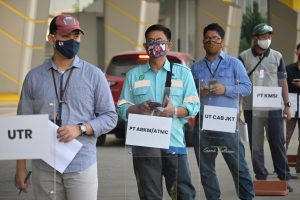As I noted in these pages last week, the coronavirus pandemic continues to scythe through parts of Southeast Asia, particularly the region’s two most populous nations, Indonesia and the Philippines.
On September 21, Philippine health authorities confirmed 3,475 more coronavirus infections, bringing its total caseload to 290,190, the highest in the region. It also announced 15 more deaths from the virus, bringing its national toll to 4,999.
While the rate of infections is starting to slow in the Philippines, the trends in Indonesia are moving in the opposite direction. The same day, Jakarta announced a new daily record of 4,176 new coronavirus infections (for a total of 248,852), while the number of deaths rose by 124 to 9,677, by far the highest number of fatalities in Southeast Asia. The escalating outbreak has since prompted calls to delay regional elections due in December, which were already postponed from September due to COVID-19.
The picture in other parts of Southeast Asia is very different. Measured in relation to population, the Philippines has registered 2,640 cases of COVID-19 per million of population, and 45 deaths; Indonesia has registered 908 cases and 35 deaths. By comparison, the comparable figures for Malaysia are 317 cases and 4 deaths per million; in Thailand, which recently clocked up 100 days without a locally transmitted case, they are 50 and 0.8, respectively.
Despite a worrying recent spike in COVID-19 cases in Myanmar, which now threatens to derail its November election, case numbers still remain relatively low, while Cambodia and Laos have remarkably escaped the worst effects of the pandemic, if not the coming economic downturn. Vietnam, meanwhile, has been one of the world’s best COVID-19 performers. Despite some scattered outbreaks in late July and early August, the country has since reasserted its control over the disease.
The scale of the outbreaks in Indonesia and the Philippines prompts an intriguing question: Why has COVID-19 exacted its greatest toll in two nations that have some claim to being Southeast Asia’s most democratic?
There are a number of possible answers. First, it remains unclear to what extent unknown factors are at play. On September 21, Reuters reported on a Brazilian study that suggested dengue fever may provide a degree of immunity from COVID-19. While this particular hypothesis prompts other questions, such as why other dengue-plagued nations have seen such alarming outbreaks, it suggests that an as-yet-unknown factor is playing into the equation.
Second, there is the simple fact of population density. Aside from the island that forms the center of the Indian city of Mumbai, Java is the most densely populated island in the world, with a population of 141 million—only a few million short of the entire population of Russia. Luzon Island in the Philippines is the third-most densely populated, home to some 60 million people. Both nations boast sprawling metropolises which have offered ideal conditions for the spread of the disease. This factor may also explain the fact that the city-state of Singapore has Southeast Asia’s highest rate of infection relative to population: some 9,829 cases per million, even though its deaths per million sit at just 5.
Third, one could ask to what extent these nations are democratic in a substantial, as opposed to procedural, sense. Indonesia and the Philippines can credibly claim to be among the most vibrant democracies in Southeast Asia. Both boast active civil societies and have long seen peaceful (if sometimes turbulent) transfers of power following relatively free elections, something which has historically earned them varying degrees of praise from Western governments.
Beyond that, the reality is more complex. In both nations, formal democratic institutions coexist with endemic levels of corruption and cronyism, enmeshed with weak political institutions and turgid state bureaucracies. They are also marked by vastly unequal patterns of economic growth, which have produced stupefying instances of wealth amid grinding poverty. In recent years, this has helped pave the way for the rise of populist outsiders – Rodrigo Duterte in the Philippines, Joko Widodo in Indonesia – whose administrations have been dismissive of scientific advice about COVID-19 and were cavalier about the disease during its early stages.
This raises the question of whether regime type per se bears much causal relation to a country’s COVID-19 response. This was the confident assumption of many Western pundits in the early stages of the coronavirus outbreak in China, when it was routinely viewed as a side-effect of the country’s authoritarian political system. But as subsequent events have shown, some authoritarian states are capable of mounting effective public health campaigns, just as long-standing democracies are capable of the most egregious bungling.
The answer to the riddle? Probably that the best predictor of a country’s COVID-19 success is less its specific regime type than its levels of state capacity and public trust in government (to say nothing of its past experience with contagions like SARS), characteristics that cut across different types of political systems. In the end, democracy matters – but only insofar as it is able to deliver.

































